The summer of 2020 will see three spacecraft launch toward the Red Planet, each one with distinct objectives.
Next year, Earth invades Mars. Launch opportunities to Mars only happen once every 26 months, and during the next window — which spans this July and August —three spacecraft are set to begin their journeys. If everything goes well, in early 2021 they’ll deliver two orbiters, a lander, and two rovers to Mars, joining the six orbiters, one lander, and one rover that already operate there.
Robotic spacecraft have orbited Mars continuously since 1997. The numerous missions have produced global maps of albedo, topography, and composition, finding evidence for abundant shallow subsurface ice and a distant past of longterm environments suitable for life. NASA seeks to take the next step with its Perseverance rover, going beyond the search for habitable environments to the search for life itself.
Perseverance won’t launch alone. Two other launches represent efforts to expand the exclusive club of agencies that have achieved successful missions at Mars beyond NASA, ESA, and India. The United Arab Emirates will launch an orbiter to Mars, and China’s plans are even more ambitious. Both missions, if successful, would mark historic firsts for their respective countries.
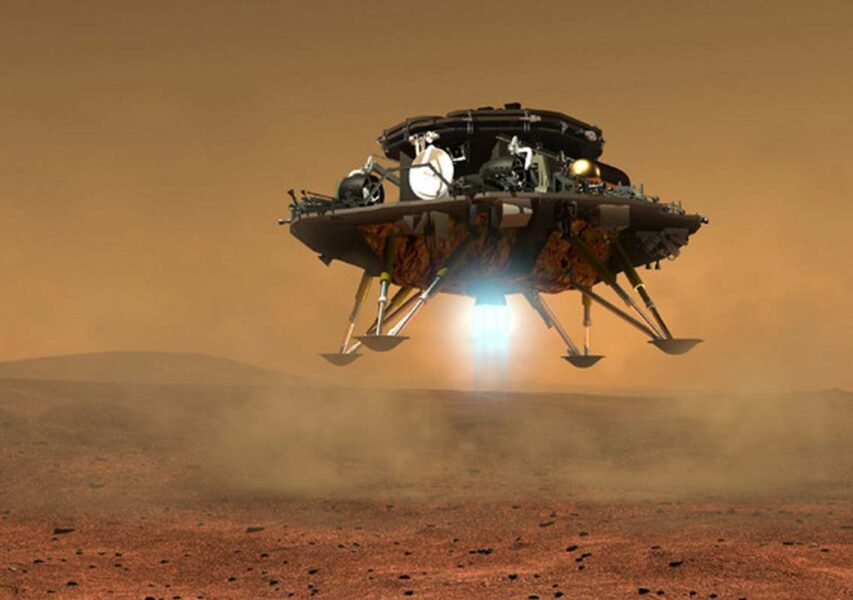
Xinhua News Agency
China’s Aspirations
China’s bold plans for its first Mars mission involve an orbiter, lander, and rover. No other agency has attempted more than an orbiter on its first mission. China has already demonstrated capability for deep-space navigation with Chang’e 2, which it piloted out of lunar orbit and on to a rendezvous with asteroid 4179 Toutatis. China also placed a lander and rover on the Moon on its first attempt with Chang’e 3.
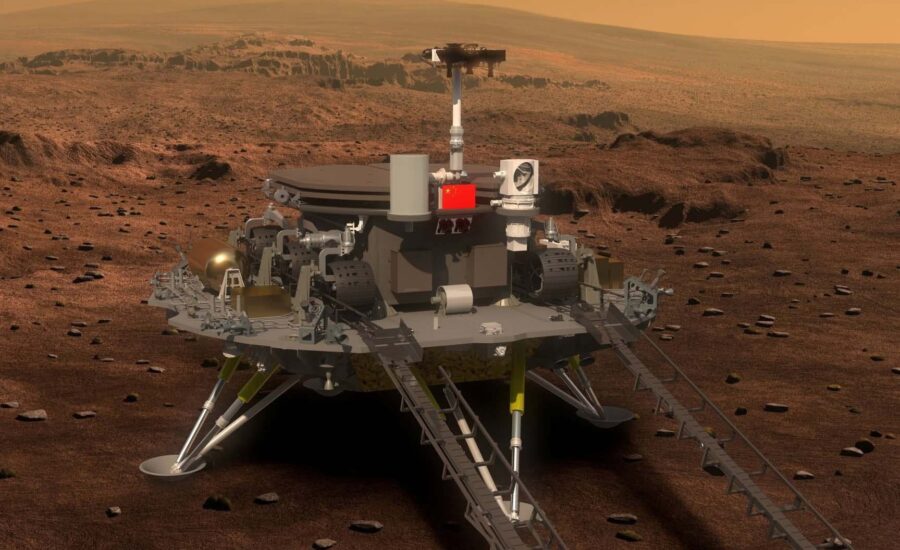
Xinhua News Agency
However, landing on Mars is far more difficult than on the Moon because of the planet’s atmosphere, which is thick enough to burn up an incoming spacecraft with frictional heating (therefore requiring an aeroshell and heat shield for entry) but too thin to slow a spacecraft by parachute alone (therefore requiring both parachutes and landing rockets).
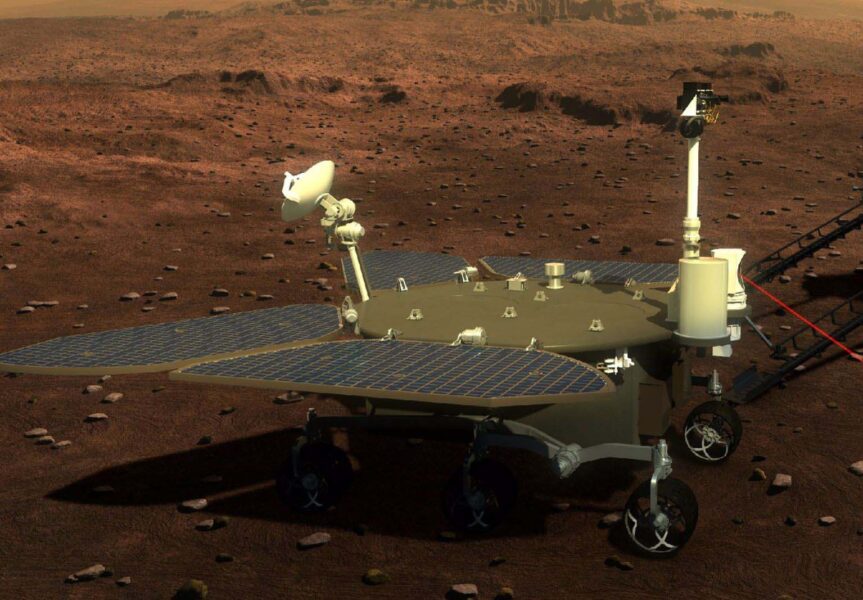
Xinhua News Agency
Like the Viking missions did, China’s Mars mission (provisionally designated Huoxing 1, or “Mars 1”) will probably place the entire spacecraft stack in orbit and then use the orbiter to perform reconnaissance of landing sites. The landing site will be in one of two northern-hemisphere regions selected for safety more than science. The orbiter has a hefty payload, including two cameras and a spectrometer for surface mapping, a radar instrument for detecting subsurface water ice, and a magnetometer and particle analyzer for studying the space environment.
The 240-kilogram, solar-powered rover is twice as heavy as China’s lunar rovers and a third the mass of Spirit and Opportunity, but it’s only a quarter of Perseverance’s weight. It carries ground-penetrating radar, a multispectral camera, weather instruments, and a magnetic-field instrument. The nominal mission is 90 Martian days, but if the Chinese lunar rovers’ longevity is any guide, not to mention Spirit and Opportunity’s experience with solar panel-cleaning events, China’s Mars rover could last much longer.
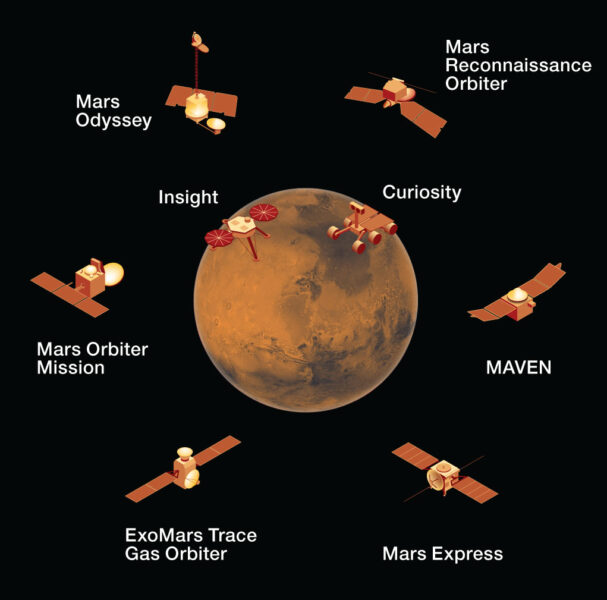
Gregg Dinderman / S&T / PE3K / shutterstock.com
The rover’s mission all depends, of course, on a successful landing. If everything works, China has long-term ambitions to conduct a robotic Mars sample return, currently planned for launch in 2028. Even if the rover isn’t successful, the orbiter alone stands to provide excellent science data. The sharp-eyed capability of the orbiter’s High Resolution Camera is comparable to the sharpest eye in orbit today, the HIRISE camera on NASA’s Mars Reconnaissance Orbiter (MRO).
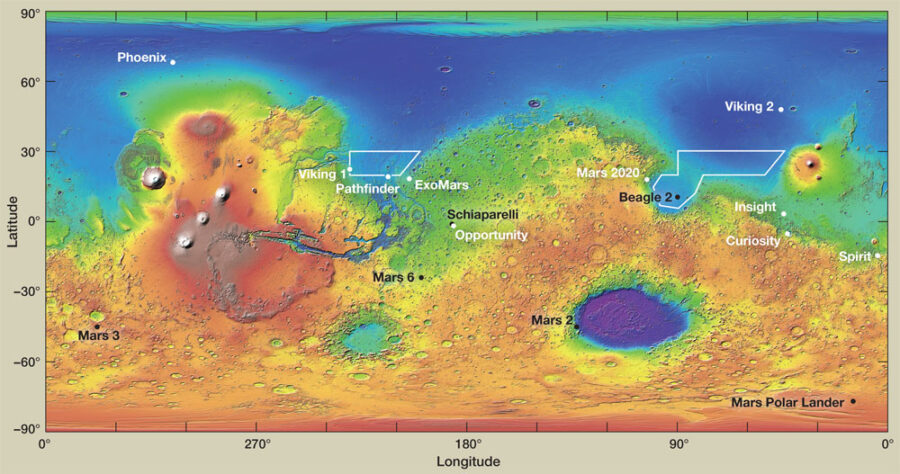
Landing sites: E. Lakdawalla; Basemap: MOLA Science Team / NASA Goddard
As NASA’s spacecraft is long past its design lifetime, a successful Chinese orbit insertion would provide backup for, and eventually replacement of, NASA’s capability — provided we can use it. While the ESA has been strengthening its ties with China, NASA is not allowed to enter into bilateral agreements with the country. The restriction comes from the so-called Wolf Amendment to the U.S. bill that provides funding to the Departments of Commerce and Justice, Science, and Related Agencies. Under current law, NASA won’t be able to turn to China to fill the gap if MRO bites the dust, at least not without FBI certification and Congressional notification. China has typically published all of its lunar data about a year after acquisition, so unless Congress acts, NASA researchers who want to use the Mars orbiter’s observations may have to wait for the proprietary period to expire.
United Arab Emirates’ Hope
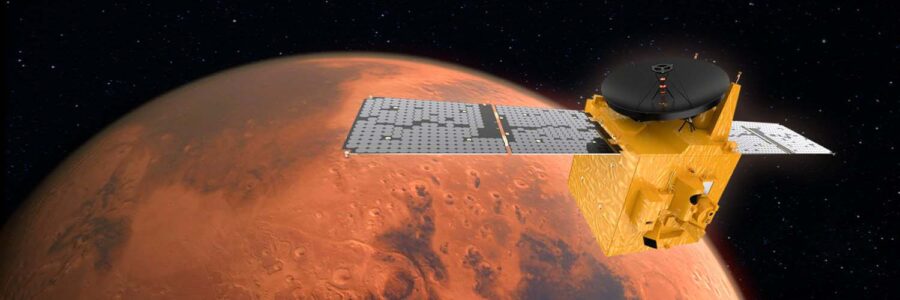
Mohammad Bin Rashid Space Center
The United Arab Emirates is taking a different approach to its first Mars mission than China. China’s all-in-one survey orbiter has a general mission to develop base maps and survey the Martian weather and space environment to further the country’s exploration plans. In contrast, the Emirates Mars Mission, named Al-Amal or Hope, is tightly focused on answering a specific set of science questions.
The mission seeks to advance Mars climate and weather science beyond the current state of the art. By taking advantage of public data and international expertise from 50 years of Mars exploration, the team is jumping right into making scientific contributions to our understanding of the Red Planet’s atmosphere.
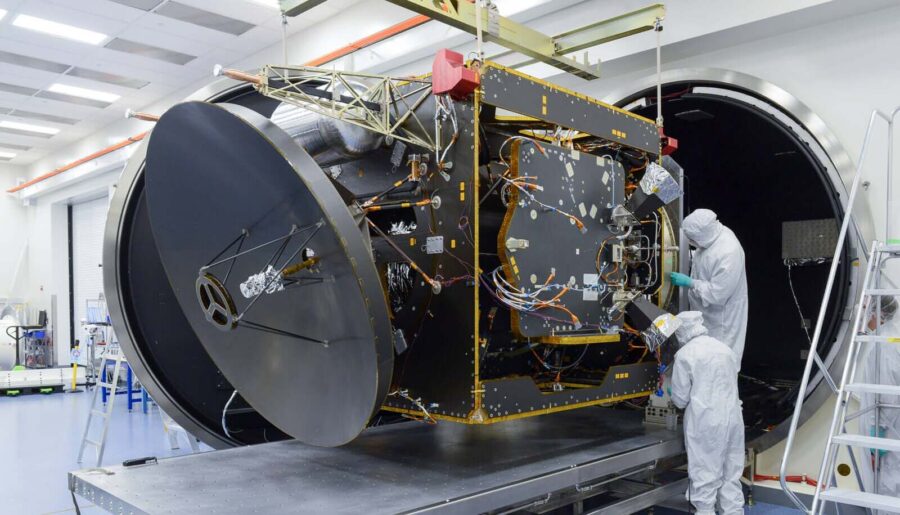
Mohammad Bin Rashid Space Center
To accomplish that end, the 1,500-kilogram orbiter will carry three remote-sensing instruments — a multiband camera and infrared and ultraviolet spectrometers — to a wide, elliptical orbit (22,000 by 44,000 kilometers, or 14,000 by 27,000 miles) around Mars. This is far more distant than other orbiters; the closest it comes to Mars is just inside the orbit of the moon Deimos.
From this remote viewpoint, Mars will rotate more slowly under the orbiter, enabling the instruments to take long looks at the development and evolution of global weather patterns. The data should be highly complementary to closer-in, atmosphere-focused satellites like NASA’s MAVEN and ESA’s ExoMars Trace Gas Orbiter, providing valuable global context for their more detailed views.
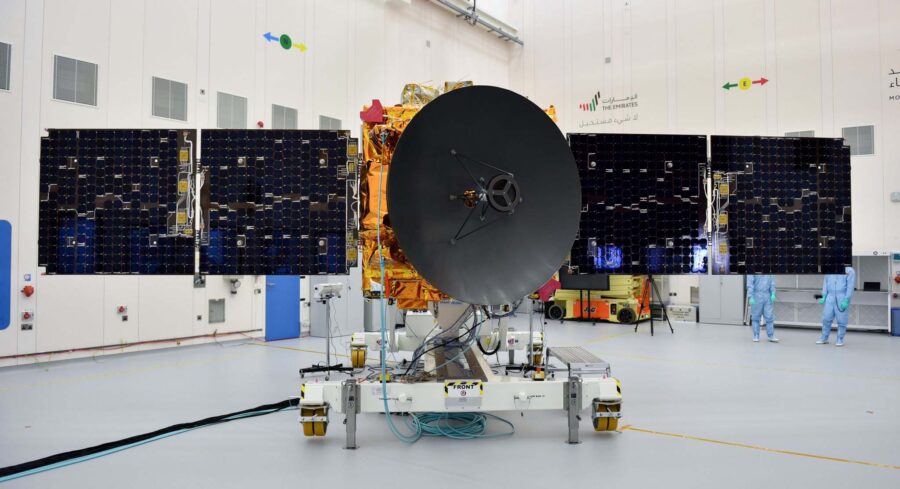
For the United Arab Emirates, Hope has a second set of worldly goals that are equally as important as the scientific ones: The mission is part of a long-term national effort to take the country from an oil-based economy to an expertise-based one.
The UAE only established its space agency in 2014, and Hope is its first interplanetary spacecraft. The team is building it with help and training from experienced international partners, in the process developing a cohort of talented young Emirati engineers and scientists. The average age of its science team members is 27, and 80% of the science team is women. (While approximately 25% of American planetary scientists are women, on average they make up only 16% of NASA mission science teams.) With an overwhelmingly youthful population, the UAE hopes that its aptly named mission will inspire young people at home and elsewhere in the Middle East to envision a future of pride and achievement in science and technology.
Mars & Earth: Fraternal Twins
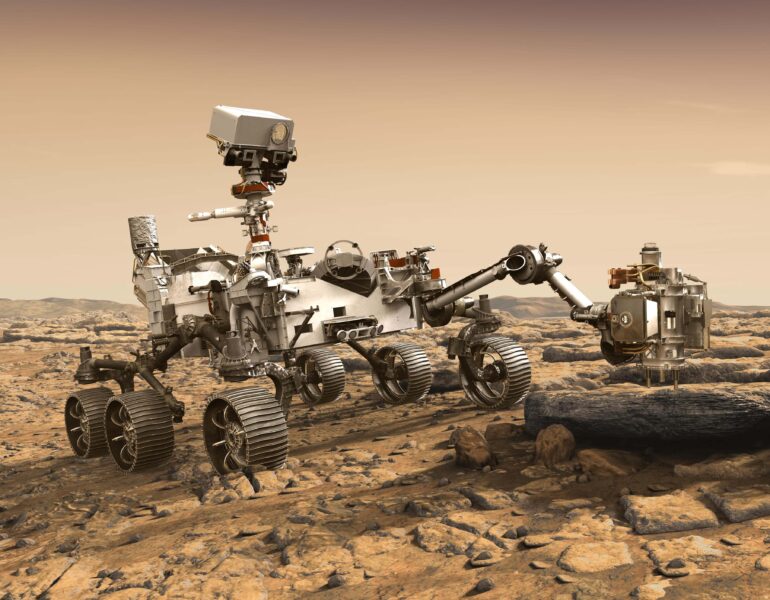
NASA / JPL-Caltech
NASA’s Perseverance represents a dramatic shift in Mars exploration strategy, made possible by two decades of mission that include NASA’s Mars Global Surveyor, Mars Odyssey, and Mars Reconnaissance Orbiter, and ESA’s Mars Express. These missions have yielded the insight that Mars and Earth started out as very similar planets but diverged between 3½ and 4 billion years ago. Those insights were confirmed and expanded on by the rovers Spirit, Opportunity, and Curiosity, which ground-truthed the orbiters’ data and found conclusive evidence for past watery and potentially life-supporting environments on Mars.
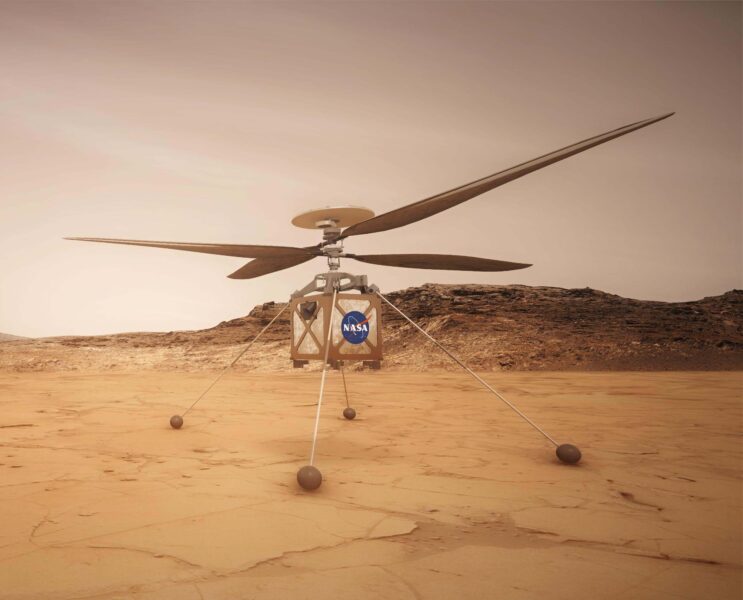
NASA / JPL-CALTECH
Before their divergence, both Earth and Mars were actively volcanic, possessed voluminous carbon dioxide–dominated atmospheres, and experienced a water cycle. But then Mars’smagnetic dynamo shut down, removing its shield against solar radiation. The much smaller planet quickly lost most of its atmosphere. Indeed, MAVEN and ExoMars Trace Gas Orbiter are studying the still-ongoing loss of Martian air.
Volcanoes continued dumping noxious gases into the sky for a while longer, so the last stages of Mars’s watery history featured rare, acidic rainfall on cold deserts. At present, the surface environment is powerfully oxidizing and unshielded from solar radiation — challenging conditions for life to thrive in. Any life on Mars must be sheltered, perhaps underground, from this harsh environment. Nevertheless, life originated on Earth sometime before 3½ billion years ago. Since Mars had similar conditions at similar times, shouldn’t life have begun there as well?
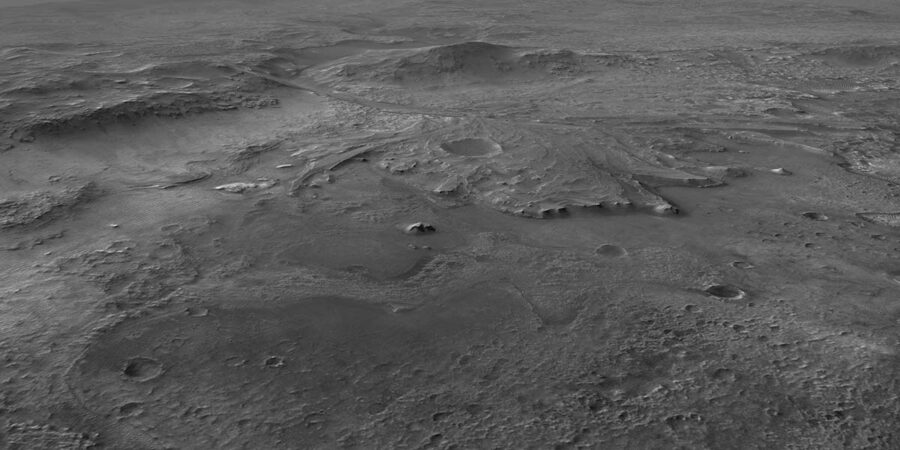
NASA / JPL / UA / Seán Doran
Unfortunately, that era of Earth’s history is nearly inaccessible because rocks of such great age are rare. The few that exist have been dramatically transformed through billions of years of plate tectonics, weathering, and erosion.
But the arid surface of Mars is far better preserved than Earth’s. As rovers traverse Martian sites containing ancient rocks that formed in wet environments, scientists plan not only to search for evidence of past life on Mars, but also to learn more about the conditions that existed back when life began on Earth.
Similar Rovers, Divergent Approaches
Perseverance looks a lot like its predecessor, Curiosity. But its instruments are new, and its mission has different goal Curiosity was, literally, a Mars Science Laboratory, performing sensitive analyses on rock samples within its belly while on the Martian surface. By contrast, Perseverance has no such interior lab. Instead, it will obtain and document samples for future return to Earth for deeper analysis.
Perseverance will be the heaviest rover ever to land on Mars: At 1,050 kilograms, it’s 17% heavier than Curiosity. Much of that weight is in instruments. Compared with Curiosity, Perseverance has upgraded science cameras (now with zoom capability!) and weather sensors. Its arm-mounted Planetary Instrument for X-ray Lithochemistry (PIXL) improves on Curiosity’s element-sensing Alpha Particle X-Ray Spectrometer. The wide-field-of-view engineering cameras Perseverance will use for navigating its environment are dramatically better than Curiosity’s. And its ground-penetrating Radar Imager for Mars’s Subsurface Experiment (RIMFAX) is a dramatic upgrade of underground imaging technology.
Of all of the new instruments, perhaps the most exciting are the two Raman spectrometers: one in the rover’s mast-mounted SuperCam and one mounted at the end of the robotic arm called the Scanning Habitable Environments with Raman and Luminescence for Organics and Chemicals (SHERLOC). Raman spectrometers allow sensitive detection of carbon containing compounds — including ones of biological interest. SuperCam, which also encompasses an upgraded version of Curiosity’s ChemCam rock-zapping laser, will help the Perseverance team determine which rocks might be biologically interesting from a distance. SHERLOC will obtain close-up, high-resolution images of rock targets using a copy of the Curiosity Mars Hand Lens Imager.
For this mission to be successful, it’s not only the landing that must go well. Perseverance will stress the aging network of NASA’s data-relay orbiters. Curiosity already routinely uses ESA’s ExoMars Trace Gas Orbiter for communications. This takes a little pressure off of Mars Odyssey and Mars Reconnaissance Orbiter, and it also provides ESA with valuable experience in data relay for their future ExoMars lander. Relief in the form of a new NASA orbiter that’s capable of providing communications relay for landed missions will not arrive at Mars until at least 2027.
Perseverance: Sample Grabber
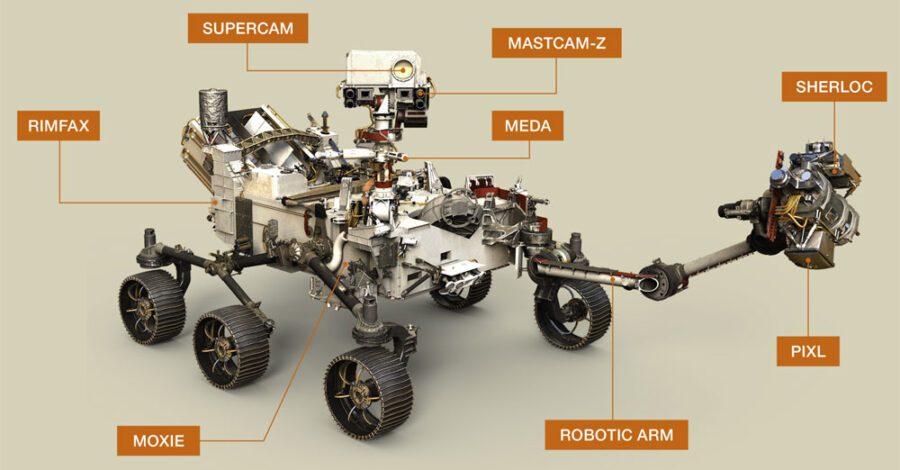
NASA / JPL-Caltech
Perseverance will land in nearly the same way that Curiosity did. On February 18, 2021, during local afternoon, it will enter the atmosphere and begin its “7 minutes of terror.” A heat shield will slow its descent, then a parachute will slow it further. Finally, it will lower itself gently to the surface on cables attached to a rocket-powered jetpack, cutting the cables after touchdown to allow the jetpack to fly away and land at a safe distance.
Engineers have upgraded the landing technology with terrain-relative navigation: The spacecraft has extra cameras and onboard processing capability to figure out where hazardous spots like big rocks and sand traps lie within the landing ellipse, and it can steer around them to land on a safe spot.
After landing, Perseverance will find itself inside a crater named Jezero. At Jezero, the mission’s goal will be “to explore the history of water and chemistry in an ancient crater lake basin and associated river-delta environments to probe early Martian climates and search for life.” In particular, the team hopes to sample rocks that contain biosignatures, evidence for the existence of ancient life.
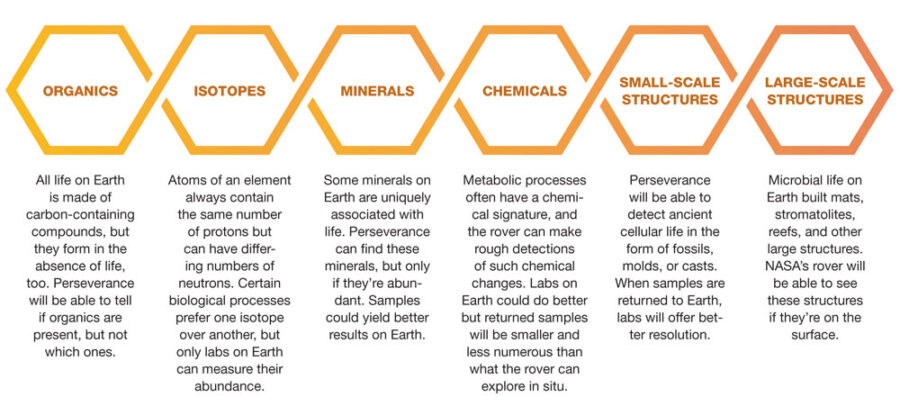
Emily Lakdawalla / T. Dubé / fireofheart / shutterstock.com
Jezero Crater, which is 45 kilometers in diameter, once held a lake that could have been as deep as 250 meters (820 feet). When the lake was full of water, two river systems emptied into it, depositing a thickly layered, spread-fingered river delta. The crater, delta, river, and river source regions have all been mapped by dozens of planetary geologists poring over every data set that every Mars orbiter has to offer. These regions contain a wide variety of rocks that geologists would dearly love to sample.
A detailed plan for Perseverance’s scientific traverse has already been hashed out. The rover will land on a flat section of the crater floor to the east of the delta, possibly atop some volcanic rocks that filled the crater after the lake dried up. A lava rock sample, if returned to Earth, could be radiometrically dated to pin down when in Mars’s history the water activity ended.
Before drilling their first sample, though, team members will execute a number of shakedown activities, which should include the flight of the first-ever Martian helicopter. The helicopter is an experimental technology that doesn’t need to work for the overall mission to be considered successful. But it could, like the Pathfinder’s Sojourner rover did back in 1997, pave the way for future exploration. The helicopter might provide the most dramatic moments (after landing) of the early phases of the new Mars mission.
The minicopter weighs only 1.8 kg and has twin counter-rotating carbon-fiber blades that span 1.2 m. It will drop off the bottom of the rover, then wait until the rover has driven a safe distance away before it begins to operate, popping up in brief flights as long as 1½ minutes. Each flight will take its cameras high enough to photograph potential traverse areas, then it will land and recharge for another go a few days later. It’s designed to fly up to 5 times, but one bad landing could end its mission more quickly.
Once the rover acquires its first sample, the team will drive to some rocks in the delta area. Geologists understand deltas very well. Consequently, they know exactly how they want to traverse Jezero’s delta for samples. They’ve zeroed in on locations that will answer questions about Mars’s history while also maximizing the opportunity to sample rocks that preserve biosignatures.
The team plans to sample at the base and surface of the delta, at the ancient lake shoreline (there may be several such shorelines), and up on the crater rim. If all goes to plan, the rover will reach the rim by the end of the nominal mission, one Mars year (687 Earth days) after landing. The goal is to collect and cache at least 20 distinct samples within that time.
If the rover is still in good shape and continues beyond the nominal mission, the team could drive on to study the surrounding bedrock, which supplied the sediment that built the delta. The rover has the ability to store up as many as 23 additional samples during that exploit.
By 2021, we may have three simultaneously operating weather stations on Mars: Curiosity, Insight, and Perseverance all carry meteorological experiments. Perseverance also has an instrument that will test ways to generate oxygen from Mars’s thin carbon dioxide atmosphere.
ExoMars: A Mission Delayed
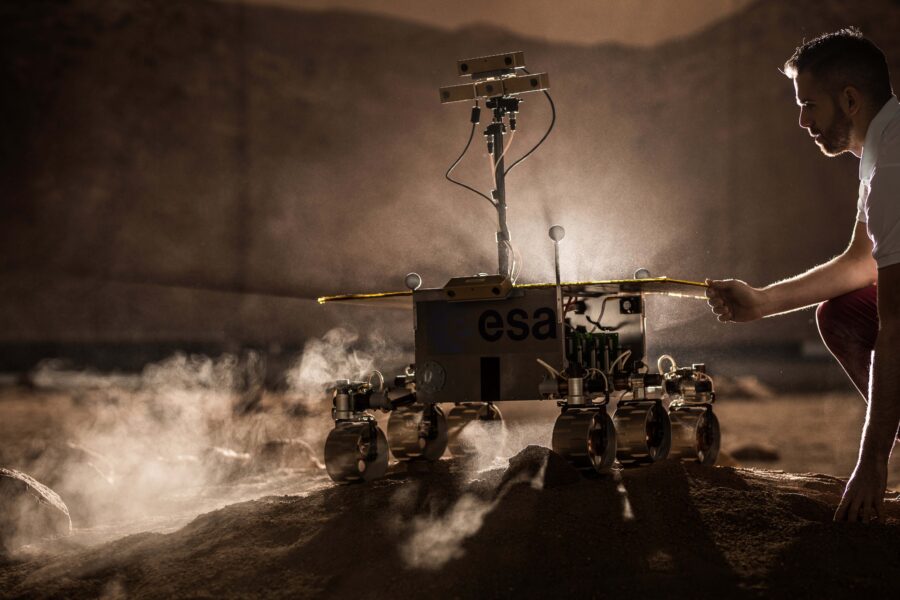
ALTEC
Another mission was originally intended for the 2020 flight window: ExoMars, a joint mission between the European Space Agency and the Roscosmos agency in Russia, would have put the Rosalind Franklin rover on the Red Planet’s surface in 2021 as well. However, parachute problems put the mission behind schedule, causing the team to delay to a 2022 launch.
Like Perseverance, the Rosalind Franklin will be on the lookout for life, but it will take a different tack to the search for biosignatures. Rather than caching samples for future study, Franklin will drill as deep as two meters into Mars, retrieving samples to analyze in the lab within its belly. It will study each sample using infrared and Raman spectrometers, before using lasers to zap it into gases for analysis with an organic-sniffing gas chromatograph mass spectrometer.
Team scientists hope that the rover’s deep drill will provide access to rocks that have been shielded from the oxidizing atmosphere and space radiation. If Mars has life in the form of microbes living beneath the surface, there is a faint but nonzero possibility that ExoMars could discover it immediately, without the need for future missions to recover and return samples.
ESA’s Rosalind Franklin rover is much smaller than Perseverance, comparable to the size of NASA’s earlier rovers Spirit and Opportunity. Unlike NASA’s rovers, though, Rosalind Franklin will not bounce to a safe landing inside airbags. Rather, it will ride down to the surface atop a Russian-built lander.
Once it rolls off the lander, Rosalind Franklin will visit Oxia Planum, a flat plain along the eastern edge of Chryse Planitia. There is abundant evidence that rivers once flowed across this landscape toward a northern sea. The rocks are slightly older than those at Jezero and contain minerals that formed in liquid water, but what kind of water? The rocks may well have been inundated by the salty waters of the northern ocean, a different environment than Jezero’s closed lake basin.
Rosalind Franklin will be in a hurry: Its nominal mission lasts only a third of a Martian year. Over a traverse path of 1.5 km, the team hopes to drill as many as six holes. The scientists plan to drill to more than one depth at each place to compare the condition of near-surface rocks to those underground.
What’s Next?
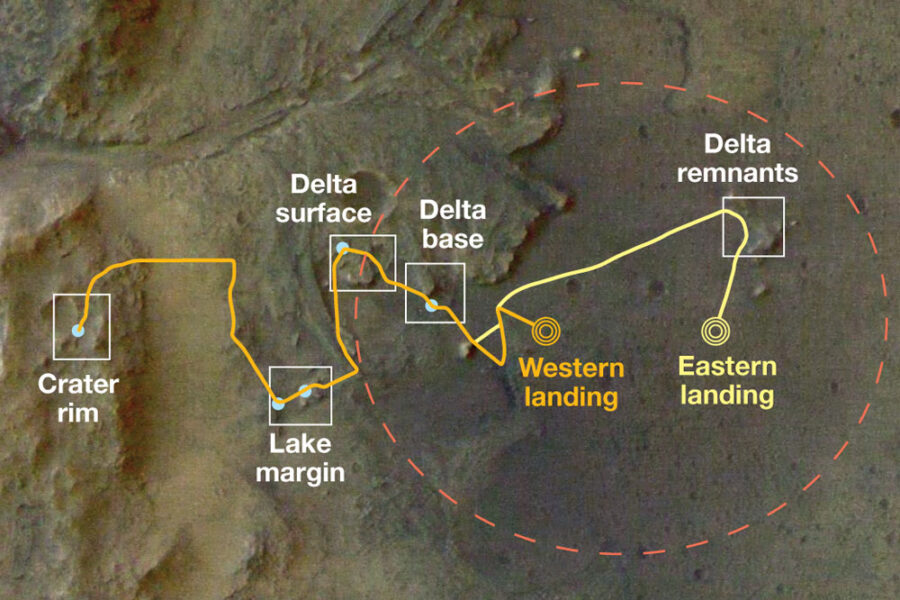
Paths: Sanjeev Gupta and Briony Horgan Basemap: ESA / DLR / FU Berlin / Emily Lakdawalla
NASA and ESA recently have begun negotiating the scope of each agency’s involvement in the collaboration that will retrieve the rock samples. Perseverance will drop them in caches along its path, carefully selecting and documenting their locations to make them straightforward to locate again.
The current plan is for two follow-up missions to launch in 2026. An Earth-return orbiter, arriving in 2027, would act as a communications relay. Then in 2028, a separate sample-retrieval mission would bring a lander and rover to the surface. The rover (possibly with Perseverance’s help) would fetch and deliver the samples to the lander. The lander would in turn load up the Mars ascent vehicle, which would then carry the samples to orbit in 2029. The Earth-return orbiter would retrieve the sample capsule, sending it on its way to Earth by 2031.
With human exploration on the horizon, caching Mars rock samples in hermetically sealed containers is crucially important. When humans finally arrive, they will carry with them a large bio-burden of microbes, with much more potential to contaminate Mars than previous robotic landers have had. If we discover life on Mars, it’ll be important to have confidence that it isn’t an Earthly contaminant but really is a Mars native. The cached samples, whenever they get picked up, will help.
EMILY LAKDAWALLA is a planetary scientist and solar system specialist for The Planetary Society. Her first book, The Design and Engineering of Curiosity: How the Mars Rover Performs Its Job, was published in March 2018. This article first appeared in the July 2020 issue of Sky & Telescope.
 1
1

Comments
Andrew James
July 23, 2020 at 7:08 pm
Excellent and very infomative article. Thank you.
You must be logged in to post a comment.
You must be logged in to post a comment.